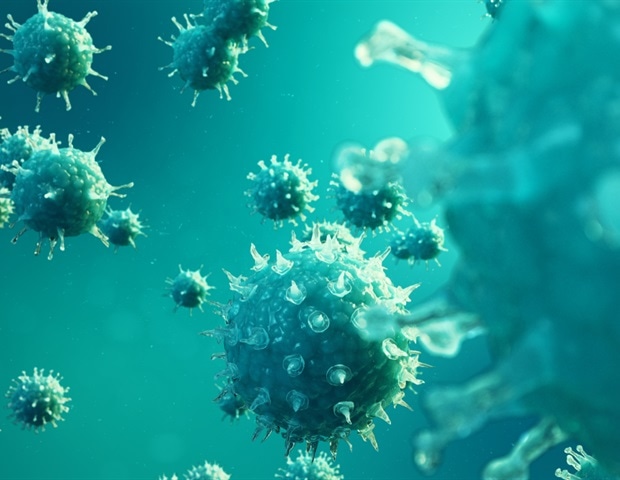Health
New Perineural Pathway Discovered for HIV Redistribution in Body

Research has unveiled a newly identified perineural pathway that allows the HIV virus to redistribute throughout the body, raising significant implications for treatment strategies. According to a study published in The American Journal of Pathology by Elsevier, this discovery provides insights into how immune cells, specifically macrophages in the central nervous system (CNS), can exit the brain and contribute to ongoing viral activity and inflammation, even in patients undergoing antiretroviral therapy.
Historically, the CNS was thought to be isolated from the rest of the body due to anatomical barriers like tight junctions and the blood-brain barrier. However, the connection between the CNS and the peripheral nervous system (PNS), which lies outside this protective barrier, has been largely overlooked. This study challenges that perception, revealing a more dynamic interplay between these systems.
Research Methodology and Findings
Co-lead investigator Kenneth C. Williams, PhD, from the Biology Department at Boston College, described the methodology used in the study. Researchers injected two different colored nanoparticles into the cerebrospinal fluid, which surrounds the brain and spinal cord. This approach allowed them to label CNS macrophages upon absorption. By tracking these particles, the team was able to identify the routes that macrophages take to exit the CNS during various stages of infection.
The study found that macrophages can leave the CNS even when not infected, utilizing both cranial and peripheral nerves as exit points. Robert V. Blair, PhD, DVM, another co-lead investigator from the Tulane National Primate Research Center, emphasized the significance of these findings, stating, “The identification of these pathways is a crucial step in understanding how the virus can persist in the body.”
Implications for HIV Treatment
The research highlights the CNS as a significant reservoir for HIV and its primate equivalent, SIV (Simian Immunodeficiency Virus). Within the CNS, perivascular macrophages are primarily infected with these viruses, sustaining ongoing inflammation despite treatment efforts. The new understanding of immune cell movement underscores that this reservoir is not static; rather, it actively contributes to persistent viral activity.
Co-lead investigator Zoey K. Wallis, PhD, also from Boston College, noted the clinical relevance of these findings. “These results underline the importance of the connection between the CNS and PNS in immunity, particularly the impact of macrophage traffic on persistent myeloid activation in the dorsal root ganglia and peripheral nerves,” she stated. “Our findings provide critical insights that will inform new strategies in the challenge of eradicating HIV.”
As the research community continues to explore the complexities of HIV persistence, this study marks a vital step toward understanding how the virus interacts with immune cells. By shedding light on the pathways that allow HIV to redistribute through the body, researchers hope to develop more effective treatments to combat this resilient virus.
The study, titled “Novel Perineural Pathways and the Dynamics of SIV-Infected Macrophage Trafficking Out of the Central Nervous System,” is set to be published in The American Journal of Pathology in 2025. With its promising findings, the research paves the way for potential advancements in the fight against HIV, offering hope for improved patient outcomes in the future.
-

 Entertainment2 months ago
Entertainment2 months agoAnn Ming Reflects on ITV’s ‘I Fought the Law’ Drama
-

 Entertainment3 months ago
Entertainment3 months agoKate Garraway Sells £2 Million Home Amid Financial Struggles
-

 Health2 months ago
Health2 months agoKatie Price Faces New Health Concerns After Cancer Symptoms Resurface
-

 Entertainment2 months ago
Entertainment2 months agoCoronation Street’s Carl Webster Faces Trouble with New Affairs
-

 Entertainment2 months ago
Entertainment2 months agoWhere is Tinder Swindler Simon Leviev? Latest Updates Revealed
-

 Entertainment3 months ago
Entertainment3 months agoKim Cattrall Posts Cryptic Message After HBO’s Sequel Cancellation
-

 Entertainment2 months ago
Entertainment2 months agoOlivia Attwood Opens Up About Fallout with Former Best Friend
-

 Entertainment2 months ago
Entertainment2 months agoMasterChef Faces Turmoil as Tom Kerridge Withdraws from Hosting Role
-

 Entertainment3 months ago
Entertainment3 months agoMarkiplier Addresses AI Controversy During Livestream Response
-

 Entertainment3 months ago
Entertainment3 months agoSpeculation Surrounds Home and Away as Cast Departures Mount
-

 World2 months ago
World2 months agoCole Palmer’s Mysterious Message to Kobbie Mainoo Sparks Speculation
-

 Entertainment2 months ago
Entertainment2 months agoITV’s I Fought the Law: Unraveling the True Story Behind the Drama









